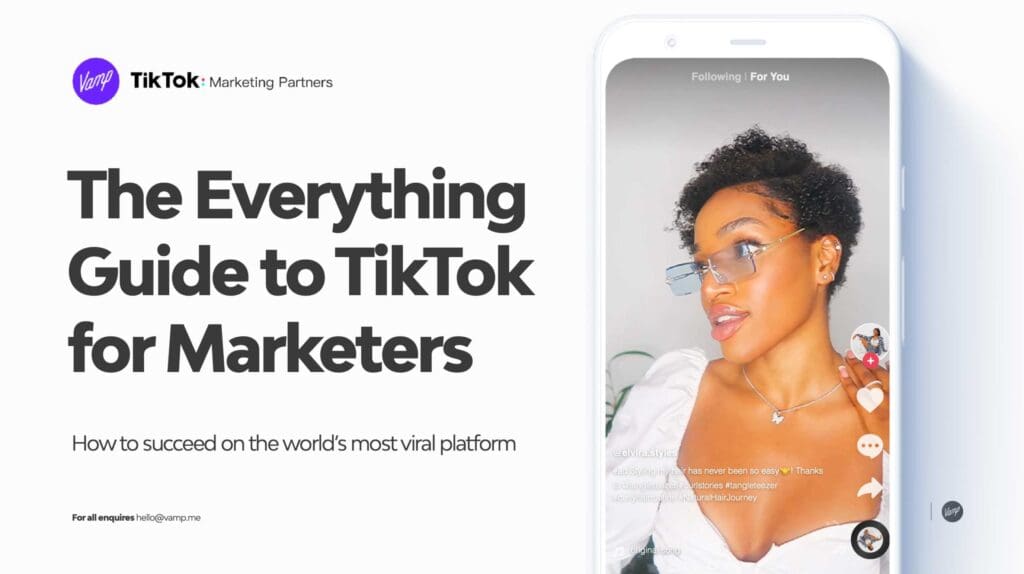///// DO NOT EDIT ABOVE THIS LINE /////
Table of Contents
Want to fully understand what social media listening is and how to do it? This guide runs through everything you need to know…
If you’re serious about digital marketing, you’ll want to get to grips with social listening – monitoring your social media channels for any mentions of your brand along with comments, conversations, and relevant keywords.
Social listening definition
Social listening is the process of tuning into what people are saying about your brand, competitors, and any relevant topics across social media platforms. It’s a form of real-time market research, and it can make all the difference to your digital marketing campaign.
Benefits of social listening
The many benefits of social listening include:
- Understand brand sentiment – social listening helps you understand how people feel about your brand and what they want from it. This is valuable feedback that you can use to boost your business – you’ll have a much clearer idea of what works and what doesn’t
- Better customer relationships – Hootsuite gives the example of Spotify’s @SpotifyCares Twitter account, which encourages followers to ask questions and voice any concerns. It also serves up daily tips and updates.
- Crisis management – you’ll be forewarned if there’s an impending crisis on the horizon. If negative comments about your brand start appearing, you can step in and ward off trouble
- Ride a wave of positivity – likewise, you can maximise the benefit of a sudden surge in positive sentiment
- Find collaborators – social listening is a great way to learn about the key players in your chosen field, the creators and the thought leaders who could become ideal collaborators for your brand
- Identify market trends – gain an in depth view of what’s happening in your market
- Track competitors – find out if your competitors are launching new products or a new social media campaign. And see how people respond to them
- Find your fans – identify your best fans and reach out to them about working with you as brand advocates
- Improve your marketing campaign – personalisation is the secret to any successful social media strategy, and with social listening you can speak directory to your audience, talking their language, and giving them content they care about
Best listening tools
Social listening doesn’t have to take an enormous amount of effort, because there are tools available that can do a lot of the grunt work for you. Here’s some of the best:
- Hootsuite
- Hubspot
- Talkwalker
- Mentionlytics
- Lately
- Sprout Social
- Crowd Analyzer
- Digimind
#1. Hootsuite
With a free Hootsuite plan, you can monitor conversations across social networks, and track keywords, mentions, and hashtags. Plus, you can listen in on what your competitors and relevant influencers are saying.
If you really want to go deep with social listening, upgrade to Hootsuite insights powered by Brandwatch. It’ll provide you with analytics from 16 billion social posts each month. This’ll enable you to see trends and patterns. The app’s insights also makes tracking brand sentiment a doddle with intuitive word clouds and metrics that measure how your brand is seen compared to the competition. Prices start at £89 a month.
#2. Hubspot
The Hubspot social media management tool features built-in social listening. (If you want to know more about social media management tools, check out this guide.) Hubspot allows you to monitor social activity with contacts in your database, monitor certain keywords, and set up email alerts.
#3. Talkwalker
With this social listening software, you can analyse everything from videos and reviews through to blogs and social media channels. You’ll be receiving information from more than 150 million sources.
Talkwalker also allows you to set up alerts to notify you of spikes in mentions and/or keywords. Pricing is available on enquiry.
#4. Mentionlytics
With plans to suit businesses of all sizes, from start-ups to corporations, this social listening tool integrates with Hootsuite and trawls through social networks, blogs, and news sites for brand mentions.
Prices start from £39 a month or you can use it for free with Hootsuite.
#5. Lately
This is another social media management tool with built in social listening that lets you monitor social media posts across platforms. It also boasts A.I software that can draft content and social media posts, which you can then review, edit, and approve. The idea is that the software should learn about your audience and generate more meaningful content over time. Prices start at £78 a month and you can try it for free.
#6. Sprout Social
Sprout Social offers a Twitter Listener platform to monitor and track brand mentions in real-time. It can also help you spot trends and find the right influencers for your brand. Prices start at £198 per month.
#7. Crowd Analyzer
Get the lowdown on brand mentions, keywords, and trends across all social media platforms, including YouTube, plus news sites, forums, and blogs with this app. It integrates with Hootsuite so you can reply to followers directly via the dashboard. It can also analyse how audiences responded to your most recent social media campaigns. The good news is, it’s free when you use it with a Hootsuite membership.
#8. Digimind
You’ll get insight across more than 20 forms of media with this software, including TikTok and Twitter. The plus point here is the user-friendly dashboard analytics. It’s powered by A.I. and ChatGPT, and you get insights from billions of sources. Pricing is available when requesting a demo.
To get a handle on social media analytics, check out our easy-to-follow guide and get on top of your social media planning with our handy calendar template.
Social listening examples
If you want to know how social listening works in the real world, you can learn a lot from Netflix. The brand shares: ‘When we aren’t posting, we’re listening, looking for new trends igniting the entertainment world.’ Thanks to its social listening efforts, Netflix totally gets its millennial audience, which means that humorous tweets like the one below, really hit the spot.
Social media listening services
If you have the budget and want somebody else to do the heavy lifting, there are lots of agencies out there offering social listening services.
With an agency, experts will do the social listening for you and provide you with a report, which will be written with your brand goals in mind. They can also do influencer market research, run a basic audit to give you an overview of your brand health, and give you a brand comparison.
If you’re looking for an agency to implement your social listening campaign read our guide to social media agencies.
Social listening strategy
Get started on your social listening with these three simple steps:
- Monitor social media channels for mentions of your brand, competitors, products, and related keywords
- Analyse the information and use what you learn to take action. This can be as simple as responding to an unhappy customer or tweaking your social content
- Track industry-related hashtags and keywords to get a view on what people are saying about your area of interest
You can narrow your focus by using Boolean operators (words like ‘and’, ‘or’ and ‘not’) to string words and phrases together, and sift out the relevant online mentions.
When it comes to social listening, how do you know which social networks to start with?
You can use all social networks for social listening purposes, but to start, it makes sense to monitor those where you have a strong presence and where your target audience hang out and have conversations.
Perhaps people talk about you regularly on Twitter but you’re never mentioned on LinkedIn. Start by casting the net wide and finding out where people are mentioning you and your competitors most. Then focus your efforts on those key networks.
Social listening report (how to build one and what to include)
Once you’ve gathered information using social listening, you can collate it in a report and circulate it amongst your team so that everyone can use the information. Sprout Social offers a free social listening report template that you can download here.
Start your report with your social listening goal. Perhaps you want to improve brand loyalty or see how your competitor’s new advertising campaign has gone down.
A social listening report will often contain the following:
- A description of the data you’re analysing, include the date it was collected and the source networks
- Key findings – you might like to include a social snapshot, detailing stats such as average engagement per message, impressions, and number of positive sentiments, etc
- A score chart – this compares your performance with that of your competitors. You can use data such as volume of messages, likes, engagement, etc
- Conversation themes – present an overview of the things people are saying from your competitors’ accounts and social networks. You can also add a word cloud that will illustrate the most popular hashtags and keywords used
- Compare positive and negative sentiment by giving the percentage of each and including examples
- Top performing posts – take screenshots of the top performing posts and include them in your report
- Demographics – give an overview of your demographics
For more information on social media sentiment analysis, have a look at our how-to guide.
Social listening vs. social monitoring
Social listening is not to be confused with social monitoring. The difference is:
Social media monitoring – monitoring social media for any messages related to your brand and responding to them in a timely and appropriate way to demonstrate that you care about customers.
Social media listening – getting to know and understand your audience by tuning into their conversations plus any surrounding your industry to improve campaign strategy.
If you want to know more about social media monitoring tools, this comprehensive article will tell you all you need to know.
Social media listening FAQs
How can social listening data be integrated with other marketing strategies?
Social listening provides a wealth of data that can enhance various aspects of a brand’s marketing strategy. For content marketing, social listening identifies trending topics, commonly asked questions, and audience pain points, enabling the creation of highly relevant content that resonates with your audience. For SEO, the insights gained can guide keyword strategy by revealing the terms and phrases your audience uses most frequently.
This ensures that your content aligns with what users are actively searching for. Social listening also strengthens email marketing campaigns by uncovering customer sentiment and preferences, which can be used to tailor personalised and engaging email content. Furthermore, integrating social listening insights into influencer marketing allows brands to identify influential voices already engaged in conversations about their niche, making collaborations more authentic and impactful.
What are the ethical considerations in social media listening?
Ethical considerations in social listening are critical to maintaining trust and adhering to data protection laws. Brands must respect user privacy by ensuring that data collection focuses only on publicly available information and avoids overstepping into personal, private conversations. Compliance with legal frameworks, such as the General Data Protection Regulation (GDPR), is essential to avoid misuse of data and potential legal repercussions.
Transparency is another cornerstone of ethical social listening—brands should communicate clearly about how they collect and use data, fostering trust among their audience. Additionally, social listening practices should avoid stereotyping or unfair profiling, ensuring that insights are used to create inclusive and respectful marketing strategies.
How can small businesses with limited resources effectively implement social listening?
Small businesses can implement social listening without breaking the bank by starting with free or low-cost tools like Google Alerts, Hootsuite, or Talkwalker’s free offerings. These tools can monitor brand mentions, industry keywords, and customer reviews across various platforms. Small businesses should focus on prioritising platforms where their audience is most active, rather than spreading resources thin across every channel.
Engaging directly with users through social media comments, polls, and surveys can also act as a cost-effective form of social listening, providing valuable qualitative data. Lastly, partnering with micro-influencers who are part of their niche community can amplify efforts to track and participate in relevant conversations without the need for advanced tools or extensive budgets.
Get started
Supercharge your social media campaign with Vamp. It’s ideal for influencers and brands of all sizes, and there’s a plan to suit all budgets.
///// DO NOT EDIT BELOW THIS LINE /////
Share this post


